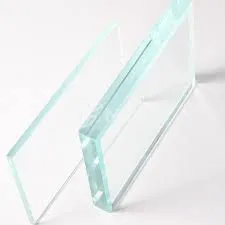The Float Glass Production Process A Comprehensive Overview
Float glass, renowned for its exceptional clarity and smooth surface, is the most widely used glass type in construction, automotive, and various other industries. The production of float glass a meticulous process that transforms raw materials into flawless sheets. This article delves into the float glass production process, outlining its stages and the technology involved.
1. Raw Materials
The float glass manufacturing process begins with the selection and preparation of raw materials. The primary ingredients are silica sand, soda ash, and limestone. Silica sand serves as the main glass-forming component, while soda ash acts as a flux, lowering the melting point of silica. Limestone is added to improve the chemical durability of the glass. Additional materials such as alumina and magnesium oxide may be included to enhance specific properties.
These raw materials are sourced and then carefully weighed and mixed in precise proportions to ensure uniformity in the glass composition.
2. Melting
The mixture is fed into a gas-fired or electric melting furnace, where it is heated to temperatures around 1,600 degrees Celsius (2,912 degrees Fahrenheit). Melting is a critical stage, as it determines the quality of the glass. The intense heat causes the raw materials to melt and combine, forming a molten glass mass. This process can take several hours, and constant monitoring is essential to prevent fluctuations in temperature and composition.
Furnaces can be of various designs, including regenerative and furnace designs that allow for energy-efficient operation. Significant advancements in technology have made modern furnaces capable of recycling heat, thus reducing energy consumption and environmental impact.
3. Float Process
Once the glass is fully melted, it is poured onto a surface of molten tin in the float bath – a hallmark of the float glass production process. The molten glass spreads out and floats on the tin, taking advantage of the liquid's properties to produce a flat, uniform sheet. This phenomenon occurs as the glass is less dense than the molten tin, allowing it to float and spread evenly.
float glass production process
The float bath is typically maintained at a temperature of around 1,100 degrees Celsius (2,012 degrees Fahrenheit). The glass moves through this bath slowly, allowing any surface imperfections to equalize and leading to a perfectly flat finish. As the glass moves further along, it begins to cool slightly and solidify.
4. Annealing
After exiting the float bath, the glass moves into an annealing lehr, where it undergoes a controlled cooling process. This step is crucial as it relieves internal stresses formed during melting and molding. The annealing process typically takes several hours, allowing the glass to cool gradually to a temperature that suits its final applications.
5. Cutting and Finishing
Once adequately cooled, the float glass sheets emerge from the lehr and are cut to desired dimensions using automated cutting machines. The sheets may undergo further finishing processes, including polishing and cleaning, to enhance their surface quality and prepare them for various applications. Quality control inspections are conducted to ensure that the glass meets industry standards for clarity and surface integrity.
6. Packaging and Delivery
The final step in the float glass production process involves packaging and shipping. Sheets are carefully stacked, protected with cushioning materials, and labeled for distribution. Manufacturers must ensure that the glass is packaged securely to prevent damage during transportation.
Conclusion
The float glass production process is a marvel of engineering and technology, focusing on quality and efficiency. As industries continue to evolve, advances in float glass technology are leading to more sustainable practices, including recycling methods and energy-efficient production techniques. Understanding this process not only highlights the importance of glass in our daily lives but also underscores the ongoing innovation in manufacturing to meet modern demands. The future of float glass looks promising, with continued developments that are likely to enhance its properties and broaden its applications.
 Afrikaans
Afrikaans  Albanian
Albanian  Amharic
Amharic  Arabic
Arabic  Armenian
Armenian  Azerbaijani
Azerbaijani  Basque
Basque  Belarusian
Belarusian  Bengali
Bengali  Bosnian
Bosnian  Bulgarian
Bulgarian  Catalan
Catalan  Cebuano
Cebuano  Corsican
Corsican  Croatian
Croatian  Czech
Czech  Danish
Danish  Dutch
Dutch  English
English  Esperanto
Esperanto  Estonian
Estonian  Finnish
Finnish  French
French  Frisian
Frisian  Galician
Galician  Georgian
Georgian  German
German  Greek
Greek  Gujarati
Gujarati  Haitian Creole
Haitian Creole  hausa
hausa  hawaiian
hawaiian  Hebrew
Hebrew  Hindi
Hindi  Miao
Miao  Hungarian
Hungarian  Icelandic
Icelandic  igbo
igbo  Indonesian
Indonesian  irish
irish  Italian
Italian  Japanese
Japanese  Javanese
Javanese  Kannada
Kannada  kazakh
kazakh  Khmer
Khmer  Rwandese
Rwandese  Korean
Korean  Kurdish
Kurdish  Kyrgyz
Kyrgyz  Lao
Lao  Latin
Latin  Latvian
Latvian  Lithuanian
Lithuanian  Luxembourgish
Luxembourgish  Macedonian
Macedonian  Malgashi
Malgashi  Malay
Malay  Malayalam
Malayalam  Maltese
Maltese  Maori
Maori  Marathi
Marathi  Mongolian
Mongolian  Myanmar
Myanmar  Nepali
Nepali  Norwegian
Norwegian  Norwegian
Norwegian  Occitan
Occitan  Pashto
Pashto  Persian
Persian  Polish
Polish  Portuguese
Portuguese  Punjabi
Punjabi  Romanian
Romanian  Russian
Russian  Samoan
Samoan  Scottish Gaelic
Scottish Gaelic  Serbian
Serbian  Sesotho
Sesotho  Shona
Shona  Sindhi
Sindhi  Sinhala
Sinhala  Slovak
Slovak  Slovenian
Slovenian  Somali
Somali  Spanish
Spanish  Sundanese
Sundanese  Swahili
Swahili  Swedish
Swedish  Tagalog
Tagalog  Tajik
Tajik  Tamil
Tamil  Tatar
Tatar  Telugu
Telugu  Thai
Thai  Turkish
Turkish  Turkmen
Turkmen  Ukrainian
Ukrainian  Urdu
Urdu  Uighur
Uighur  Uzbek
Uzbek  Vietnamese
Vietnamese  Welsh
Welsh  Bantu
Bantu  Yiddish
Yiddish  Yoruba
Yoruba  Zulu
Zulu 

